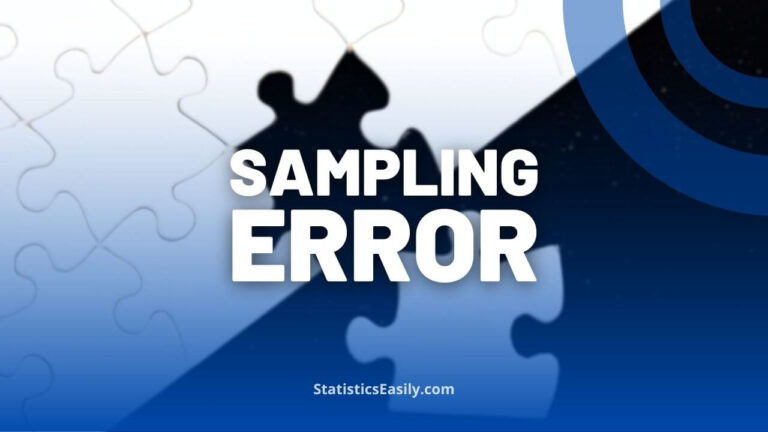What Does Odds Ratio Tell You?
You will learn the crucial role of the odds ratio in interpreting data relationships and making informed decisions.
Introduction
The odds ratio is a statistical measure pivotal in data analysis, especially within epidemiology, medicine, and social sciences. It offers a nuanced perspective on the relationship between two events, providing fundamental insights for making informed decisions. By quantifying the odds of an occurrence in one group relative to another, the odds ratio serves as a cornerstone in interpreting complex data sets, enabling researchers and data scientists to unveil underlying patterns and associations.
Understanding the odds ratio is crucial for anyone delving into data analysis, as it transcends mere numerical comparison, embodying the intricate dynamics of cause and effect. Its application spans various research domains, making it an indispensable tool for those seeking to discern the true nature of the data they are examining. This article will explore the odds ratio comprehensively, shedding light on its calculation, interpretation, and real-world applications, thereby equipping you with the knowledge to leverage this robust statistical measure in your research endeavors.
Highlights
- The odds ratio quantifies the strength of association between two events.
- An odds ratio greater than 1 indicates a positive association.
- Values less than 1 suggest a negative relationship between variables.
- The odds ratio of 1 means no association exists between the compared elements.
- Crucial in fields like medicine, epidemiology, and social sciences.
Ad Title
Ad description. Lorem ipsum dolor sit amet, consectetur adipiscing elit.
Understanding Odds Ratio
The odds ratio is a foundational concept in statistical analysis. It offers a quantitative measure of the strength of association between two binary variables. It compares the odds of an event occurring in one group to the odds of occurring in another, serving as a critical tool for researchers across various disciplines.
Definition and Basic Concept
At its core, the odds ratio reflects the ratio of the odds of an event occurring in one group to the odds of it occurring in another. Mathematically, let’s consider an event A and two groups, 1 and 2. The odds ratio is calculated as (Odds of A in Group 1) / (Odds of A in Group 2). The odds in this context are defined as the probability of the event occurring divided by the probability of it not occurring, or P(Event)/P(No Event).
Importance in Statistical Analysis and Research
The odds ratio is indispensable in fields where binary outcomes are analyzed, such as clinical trials, epidemiological studies, and social science research. It provides a precise, interpretable measure of the strength and direction of the association between exposure and outcome variables, even in complex datasets. This measure is precious in case-control studies, where the odds ratio can offer insights into the relationship between various risk factors and outcomes, guiding public health policies, medical practices, and further scientific inquiries.
By quantifying associations, the odds ratio aids in uncovering underlying patterns in data, facilitating a deeper understanding of the phenomena under study. Its utility in comparing the relative odds of events across different groups makes it a powerful tool for hypothesis testing and exploratory data analysis, bridging the gap between theoretical models and real-world applications.
Calculating Odds Ratio
Calculating the odds ratio involves a straightforward, systematic process that can be easily followed with basic knowledge of probability and statistics. This section provides a step-by-step guide to calculating the odds ratio and examples illustrating the process.
Step-by-Step Guide
1. Identify the Groups: Determine the two groups or conditions you are comparing. Let’s call them Group 1 (treatment group) and Group 2 (control group).
2. Determine the Outcomes: For each group, identify the number of cases where the event of interest occurs (positive outcome) and the number of cases where it does not occur (negative outcome).
3. Calculate the Odds: For each group, calculate the odds of the event occurring. The odds are the ratio of the number of positive outcomes to the number of negative outcomes. Mathematically, it’s expressed as:
4. Compute the Odds Ratio: The odds ratio is the ratio of the odds in Group 1 divided by the odds in Group 2. Mathematically,
Example
Consider a study comparing the effect of a new drug on a particular disease. In the treatment group (Group 1), 30 out of 100 patients recovered (positive outcome), while 70 did not (negative outcome). In the control group (Group 2), 20 out of 100 patients recover, and 80 do not.
- Odds in Group 1: (30/70)
- Odds in Group 2: (20/80)
- Odds Ratio: (30/70)/(20/80)
Calculating this gives an odds ratio of (30×80)/(70×20)=2400/1400=1.71, indicating that patients in the treatment group are 1.71 times more likely to recover than those in the control group.
Visualization
To further illustrate this concept, consider a 2×2 contingency table showing the distribution of outcomes across the two groups:
| Recovered | Did Not Recover | |
|---|---|---|
| Group 1 | 30 | 70 |
| Group 2 | 20 | 80 |
This visual representation helps understand the calculation process and interpret the results in the context of the odds ratio.
Interpreting Odds Ratio
Interpreting the odds ratio is a critical step after its calculation. Understanding what the value signifies can provide significant insights into the relationship between variables in a study.
How to Interpret the Results
- Greater Than 1: An odds ratio greater than 1 implies that the event is more likely to occur in the first group. For instance, if the odds ratio is 2, the event is twice as likely to occur in the first group compared to the second.
- Equal to 1: An odds ratio of precisely 1 indicates that the event is equally likely in both groups. There is no association between the factor being studied and the outcome.
- Less Than 1: Conversely, an odds ratio less than 1 suggests that the event is less likely to occur in the first group. An odds ratio of 0.5, for instance, indicates that the event is half as likely to occur in the first group as in the second.
Common Misconceptions and Clarifications
The odds ratio is a valuable statistic in many fields. Still, it must be interpreted carefully, considering the study’s design and other potentially influencing factors. By understanding and addressing common misconceptions, one can more accurately convey the significance of the results derived from this measure.
Causation vs. Association: An odds ratio does not prove causation; it only indicates the strength of association between variables. High or low odds ratios suggest a statistical association that may warrant further investigation.
Confidence Intervals: The odds ratio should be interpreted within the context of its confidence intervals. A wide interval may indicate a lack of precision in the estimate. In contrast, a narrow interval suggests a more precise estimation.
Interplay with Risk Factors: Confounding factors can affect the odds ratio. When interpreting the results, it is vital to consider these factors, as they can skew the association between the studied variables.
Applicability Limitations: Interpreting the odds ratio can be less intuitive when the outcome is common (high probability events). Other measures, like the risk ratio, might be more informative in such cases.
Odds Ratio in Logistic Regression
In earlier sections, we explored the odds ratio as a measure of association between two categorical variables, each with two categories. However, the odds ratio can also play a crucial role in logistic regression, where we often deal with a binary dependent variable and one or more independent variables that could be continuous. This change in variable types introduces a new dimension to interpreting the odds ratio.
Clarifying Odds Ratio in Logistic Regression
When we include continuous variables as predictors in a logistic regression model, the odds ratio provides insights into how a continuous variable influences the probability of a binary outcome.
Continuous Independent Variables: Here, the odds ratio expresses the effect of a one-unit increase in the continuous variable on the odds of the outcome. If the odds ratio is above 1, the probability of the outcome increases as the continuous variable increases. If the odds ratio is below 1, the outcome becomes less likely with each unit increase in the continuous variable.
Simple Interpretation of Coefficients: The logistic regression model gives us coefficients as log odds, which are not intuitive. By exponentiating these coefficients, we transform them into odds ratios, which tell us by what factor the odds of the outcome are multiplied for each unit change in the independent variable.
Examples for Enhanced Understanding
Consider a logistic regression model that estimates the probability of developing a certain disease based on various factors, including body mass index (BMI), age, and smoking status.
BMI (Continuous Variable): A coefficient for BMI might be 0.2, which translates to an odds ratio of 1.22 (e0.2). This indicates that with each additional BMI unit, the odds of developing the disease increase by 22%.
Age (Continuous Variable): If the coefficient for age is -0.1, the odds ratio is 0.90 (e−0.1). This suggests that the odds of developing the disease decrease by 10% with each additional year.
Smoking Status (Categorical Variable): For smoking status, suppose non-smokers are the reference category, and the coefficient for being a smoker is 0.7. This gives us an odds ratio of 2.01 (e0.7), meaning smokers have twice the odds of developing the disease compared to non-smokers.
High-Risk Factor (Continuous Variable): If a high-risk factor has a coefficient of 1.5, the odds ratio is 4.48 (e1.5), indicating a more than fourfold increase in the odds of the outcome occurring with each unit increase in the risk factor.
Applications of Odds Ratio
The odds ratio is not just a theoretical statistical measure; it has practical applications across many fields, illustrating its versatility and utility in real-world scenarios.
Practical Examples in Various Fields
Medicine: In clinical research, the odds ratio determines whether a treatment significantly affects patient outcomes. For example, the efficacy of a new drug in reducing the incidence of a disease can be assessed by calculating the odds ratio from clinical trial data.
Epidemiology: Public health officials often use odds ratios to understand disease risk factors. For instance, the odds ratio can help determine whether a lifestyle choice is associated with the likelihood of developing a health condition.
Finance: The finance industry applies odds ratios to assess the risk of specific investments. Investors can make more informed decisions by comparing the odds of default between two different investment opportunities.
Social Sciences: In fields such as psychology and sociology, odds ratios are used to study the relationships between social factors and individual behaviors or outcomes, such as the association between educational level and job market success.
Case Studies Highlighting Its Utility
Case Study in Medicine: A study might investigate the effectiveness of a new cholesterol-lowering drug. Suppose the odds ratio is found to be significantly above 1. In that case, it suggests that the drug effectively reduces cholesterol levels compared to a placebo.
Case Study in Epidemiology: Research on the correlation between smoking and lung cancer yields an odds ratio significantly greater than 1, indicating a strong positive association between smoking and the incidence of lung cancer.
Case Study in Finance: An odds ratio could be used to compare the odds of bankruptcy between companies with high debt ratios and those with lower debt levels, aiding in investment decisions.
Case Study in Social Sciences: A study might find that the odds ratio of achieving higher income levels is greater for individuals with higher education, highlighting the impact of education on income.
Comparing Odds Ratio to Other Statistical Measures
While the odds ratio is a cornerstone in statistical analysis, especially in fields like epidemiology and medicine, it’s essential to understand its nuances compared to other measures, such as relative risk, absolute risk, and the number needed to treat (NNT). Each of these measures provides unique insights into the data, helping to paint a fuller picture of the research findings.
Odds Ratio vs. Relative Risk
- Differences: The odds ratio compares the odds of an event occurring in two groups. In contrast, the relative risk compares the probabilities. Relative risk is often more intuitive, as it directly relates to the chances of an event happening. In contrast, the odds ratio is about the odds, a slightly more abstract concept.
- Similarities: Both measures compare the effect of an exposure or intervention between two groups. They are instrumental in clinical and epidemiological studies to quantify the association between risk factors and outcomes.
Odds Ratio vs. Absolute Risk
- Differences: Absolute risk provides the actual probability of an event occurring in a single group without comparison to another group. In contrast, the odds ratio requires a comparison between the two groups. Absolute risk is a more direct measure of risk, while the odds ratio offers a relative measure between groups.
- Similarities: Both are fundamental in assessing risk. While the odds ratio gives a relative comparison, knowing the absolute risks in each group can help interpret the odds ratio’s real-world significance.
Odds Ratio vs. Number Needed to Treat
- Differences: The NNT is derived from absolute risk reduction and indicates how many individuals need treatment to prevent one additional adverse event. It’s a measure of treatment effect and clinical utility, contrasting with the odds ratio, which assesses association strength without directly informing about the treatment’s practical impact.
- Similarities: The odds ratio and NNT are crucial for making informed decisions in healthcare. They complement each other by offering the strength of association (odds ratio) and the tangible impact of an intervention (NNT).
Practical Considerations
When interpreting research findings, it’s essential to consider these measures together:
- An odds ratio significantly less than 1 might indicate a protective effect of an intervention, but understanding the absolute risk in each group can provide insight into the intervention’s practical significance.
- The relative risk offers a straightforward comparison of probabilities between groups, enhancing the odds ratio’s contextual understanding.
- The NNT builds on absolute risk reduction to translate statistical findings into actionable clinical guidance, showing how many patients must be treated to prevent one adverse outcome.
Ad Title
Ad description. Lorem ipsum dolor sit amet, consectetur adipiscing elit.
Conclusion
As we conclude our exploration of the odds ratio, reflecting on the journey we’ve undertaken through statistical analysis is vital. We delved into the odds ratio’s essence, uncovering its pivotal role in quantifying the strength of association between two events across various fields, notably in epidemiology, medicine, and social sciences.
We’ve dissected the odds ratio from its foundational principles, through its calculation and interpretation, to its nuanced application in logistic regression. The discussions extended beyond to compare and contrast the odds ratio with other key measures such as relative risk, absolute risk, and number needed to treat, each offering unique insights yet interconnected in the broader spectrum of statistical analysis.
Recap of Critical Points:
- The odds ratio is a cornerstone of interpreting complex data sets, enabling the revelation of underlying patterns and associations.
- Its calculation and interpretation require meticulous attention to detail, ensuring the accurate quantification of the association between variables.
- The comparative analysis with relative risk, absolute risk, and NNT highlighted the multifaceted nature of statistical measures, emphasizing the importance of context in choosing the appropriate tool for analysis.
Recommended Articles
Discover more about statistical analysis techniques on our blog to deepen your understanding and expertise.
- The Hidden Truth: What They Never Told You About Statistics Education
- Exploring Standard Deviation: Statistics and Data Analysis Made Easy
- A Comprehensive Guide to Levels of Measurement in Data Analysis
- What’s Regression Analysis? A Comprehensive Guide for Beginners
- Sample Size in Logistic Regression: A Simple Binary Approach
- How to Report Results of Simple Binary Logistic Regression
- Odds Ratio – an overview | ScienceDirect Topics (External)
- Logistic Regression Sample Size (Stories)
Frequently Asked Questions (FAQs)
Q1: What is the Odds Ratio? The odds ratio is a statistical measure that compares the odds of an event occurring in one group to the odds of it occurring in another group. It’s a vital tool in epidemiology, medicine, and social sciences for understanding the strength of association between two binary variables.
Q2: How do you calculate the Odds Ratio? To calculate the odds ratio, divide the odds of the event in the treatment (or exposed) group by the odds in the control (or unexposed) group. The odds are calculated as the ratio of the number of positive outcomes to the number of negative outcomes within each group.
Q3: What does an Odds Ratio greater than 1 signify? An odds ratio greater than 1 indicates a positive association between the exposure and the outcome, suggesting that the event is more likely to occur in the first group compared to the second.
Q4: Can the Odds Ratio determine causation? No, the odds ratio can only indicate an association between variables. It cannot prove causation due to potential confounding factors and the observational nature of many studies using odds ratios.
Q5: How does the Odds Ratio differ from Relative Risk? The odds ratio compares odds, while relative risk compares probabilities. Relative risk is more intuitive for direct probability comparison. Still, the odds ratio can be used in a broader range of study designs, including case-control studies.
Q6: Is the Odds Ratio applicable only in medical research? While particularly prevalent in medical research and epidemiology, the odds ratio is widely used in various fields, including finance and social sciences, to analyze binary outcome data.
Q7: What does an Odds Ratio of 1 mean? An odds ratio of 1 indicates no association between the exposure and the outcome, meaning the event is equally likely in both groups.
Q8: How do you interpret an Odds Ratio less than 1? An odds ratio less than 1 suggests a negative association, indicating the event is less likely to occur in the first group compared to the second.
Q9: Why is the Odds Ratio used in case-control studies? The odds ratio is particularly suited for case-control studies because it can estimate the relative risk in situations where direct calculation of probabilities is not possible due to the study design.
Q10: Can Odds Ratio be used for continuous data? Typically, the odds ratio is used for categorical data. However, logistic regression models can also be used to interpret the effect of continuous independent variables on a binary outcome.








